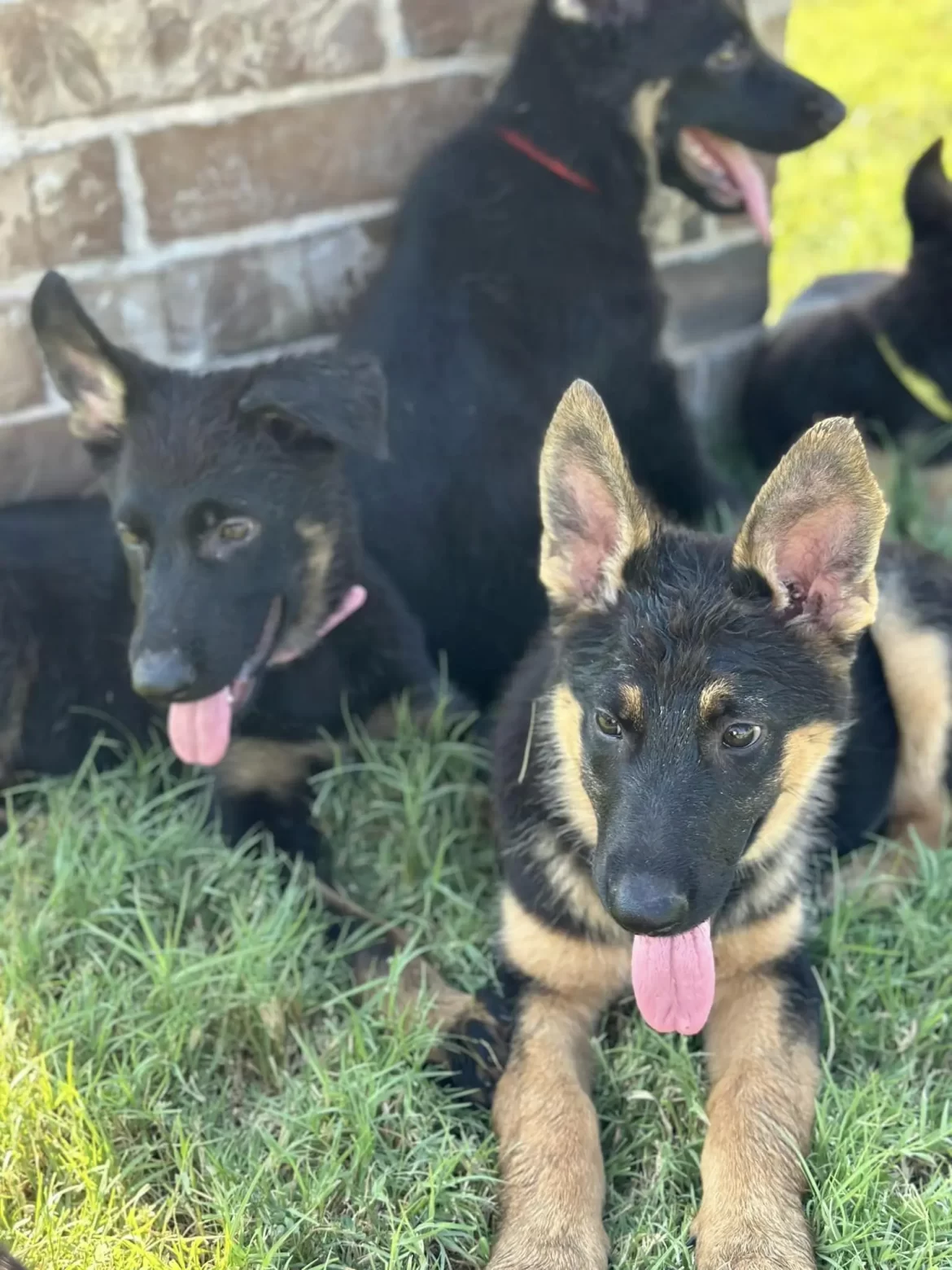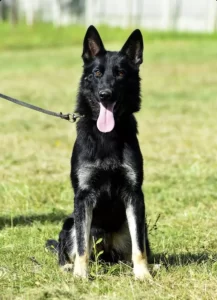Why Schutzhund Training German Shepherd Puppy Might Be A Good Idea
Schutzhund training, also referred to as IGP or IPO, is a demanding training regimen that originated in Germany to assess the working abilities of German Shepherd Dogs. Currently, Schutzhund training is employed all over the globe to improve the abilities of different working dogs, making it a great choice for individuals interested in training a dog for home protection. Included are six strong arguments for considering Schutzhund training for your German Shepherd puppy if you intend your puppy to grow up to be a home protection dog.
1.Improves Compliance and Management
A key objective of Schutzhund training is to develop a strong sense of obedience and control in dogs, vital for a home protection dog. In Schutzhund training, dogs learn to obey commands quickly and accurately, even in stressful circumstances (Feddersen-Petersen, 2001). This degree of compliance guarantees that your dog will serve as a protector while restraining any unintended aggression, thereby maintaining control.
Studies have shown that when a German Shepherd puppy receiving Schutzhund training show much greater obedience levels than those not receiving such training (Kutsumi et al., 2013). This implies that a dog trained in Schutzhund is more inclined to obey your orders when faced with a dangerous scenario, guaranteeing that they behave accordingly to safeguard your household and loved ones.
Schutzhund training includes intense protection drills, teaching dogs to recognize and react to possible dangers. This training involves more than just basic obedience, it also teaches the dog to perform controlled protection actions like barking when told to, holding suspects, and letting go when instructed (Haverbeke et al., 2010). These abilities are priceless for a home protection dog, as they guarantee that the dog can efficiently eliminate threats while staying disciplined.
A research conducted by van der Borg et al. (2010) discovered that dogs trained in protection activities, like Schutzhund, exhibited more reliable and efficient protective actions in comparison to untrained dogs. Training at an advanced level of protection makes Schutzhund-trained dogs highly adept at guarding homes, offering a dependable security measure for your property.
2. Develops self-assurance and security
Confidence is an essential quality in a home protection dog, and Schutzhund training aids in developing this confidence by exposing the dog to a range of challenges and situations. Dogs in Schutzhund training are introduced to various settings, individuals, and situations, which aids in their capacity to stay composed and concentrated when faced with challenges (Jones & Gosling, 2005). This familiarization helps the dog stay calm in new situations, enhancing their ability to protect effectively.
Rooney and Bradshaw (2002) found that dogs who participate in organized activities like Schutzhund show higher emotional stability and are less likely to exhibit anxiety or fear-based aggression. This emotional steadiness guarantees that a Schutzhund-trained dog can better confront real-life dangers with the assurance and calmness needed for effective home security.
3. Improves overall physical health and stamina
Schutzhund training involves dogs participating in physically challenging tasks like tracking, protection work, and agility exercises. This intense training program makes sure that dogs stay in top physical shape, which is crucial for a guard dog that might have to react to dangers quickly (Helton, 2009). A healthy and nimble dog can better handle intruders and protect your home successfully.
Research done by Lefebvre et al. (2007) discovered that working dogs, like those trained in Schutzhund, demonstrated increased levels of physical endurance and stamina in comparison to pet dogs. Having improved physical condition guarantees that your Schutzhund-trained dog is constantly prepared to defend your home, even in situations that demand prolonged exertion or movement.
4. Enhances the Connection Between Canine and Guardian
Training a dog in Schutzhund requires the dog and owner work closely in cooperatively. This interaction enhances the bond between dog and owner. In so doing, Schutzhund promotes trust and builds relationship between the dog and the family it will protect. (Kobelt et al., 2003). A strong connection is essential for a home protection dog, as it helps the dog better understand and follow your instructions and standards, resulting in enhanced protection.
Studies have demonstrated that dogs engaged in activities like Schutzhund, which involve close owner participation, show a stronger bond with their owners (Kubinyi et al., 2007). This stronger bond created through Schutzhund training increases the dogs’ attentiveness and trustworthiness, guaranteeing their preparedness to protect their family and territory.
5. Develops Cognitive Engagement and Reduces Behavior Issues
Schutzhund training provides significant mental stimulation necessary for intelligent and active breeds commonly utilized for home protection, like German Shepherds, Belgian Malinois, and Rottweilers. Engaging in Schutzhund training provides mental stimulation for dogs, preventing boredom and decreasing the chances of behavior issues like aggression or destructiveness (Herron et al., 2009).
Research conducted by Takeuchi et al. (2001) discovered that dogs who received consistent mental stimulation from training had reduced behavioral issues and were less prone to exhibiting anxiety-related behaviors. This indicates that a dog trained in Schutzhund is not only better at protecting, but also more well-adapted and manageable in a household setting.
In conclusion
Schutzhund training provides a well-rounded method for getting a guard dog ready for home protection, guaranteeing they have the necessary obedience, guarding abilities, confidence, physical fitness, strong connection with their owner, and mental stimulation to succeed in their duty. Investing in Schutzhund training helps prepare your German Shepherd puppy with the necessary skills and temperament to offer dependable protection for your home and family. This training technique goes above and beyond simple obedience, turning your dog into a proficient protector prepared to confront any potential danger. Here at Czech Working Line, virtually every dog in every pedigree for every one of our dogs has been Schutzhund titled. Some of you may have arrived at our site looking for basic information on how to find a great German Shepherd puppy for sale. To see what we have available, click here.
Bibliography
- Feddersen-Petersen, D. (2001). The ontogeny of social play and agonistic behaviour in selected canid species. Anthrozoös, 14(4), 257-261.
- Haverbeke, A., Laporte, B., Depiereux, E., Giffroy, J. M., & Diederich, C. (2010). Training methods of military dog handlers and their effects on the team’s performances. Applied Animal Behaviour Science, 125(1-2), 51-60.
- Helton, W. S. (2009). Cephalization, information processing, and dog intelligence. Behavioural Processes, 80(3), 291-301.
- Herron, M. E., Shofer, F. S., & Reisner, I. R. (2009). Retrospective evaluation of the effects of diazepam in dogs with anxiety-related behavior problems. Journal of Veterinary Behavior: Clinical Applications and Research, 4(5), 196-202.
- Jones, A. C., & Gosling, S. D. (2005). Temperament and personality in dogs (Canis familiaris): A review and evaluation of past research. Applied Animal Behaviour Science, 95(1-2), 1-53.
- Kobelt, A. J., Hemsworth, P. H., Barnett, J. L., & Coleman, G. J. (2003). A survey of dog ownership in suburban Australia—conditions and behavior problems. Applied Animal Behaviour Science, 82(2), 137-148.
- Kubinyi, E., Turcsán, B., & Miklósi, Á. (2007). Dog and owner demographic characteristics and dog personality trait associations. Behavioural Processes, 76(3), 320-325.
- Lefebvre, D., Diederich, C., Delcourt, M., & Giffroy, J. M. (2007). The quality of the relation between handler and military dogs influences efficiency and welfare of dogs. Applied Animal Behaviour Science, 104(1-2), 49-60.
- Rooney, N. J., & Bradshaw, J. W. S. (2002). An experimental study of the effects of play upon the dog–human relationship. Applied Animal Behaviour Science, 75(2), 161-176.
- Takeuchi, Y., Ogata, N., Houpt, K. A., & Scarlett, J. M. (2001). Differences in background and outcome of three behavior problems of dogs. Applied Animal Behaviour Science, 70(4), 297-308.
- van der Borg, J. A. M., Beerda, B., Ooms, M., de Souza, A. S., & van Hagen, M. (2010). Evaluation of behaviour testing for human-directed aggression in dogs. Applied Animal Behaviour Science, 128(2-4), 69-90.




